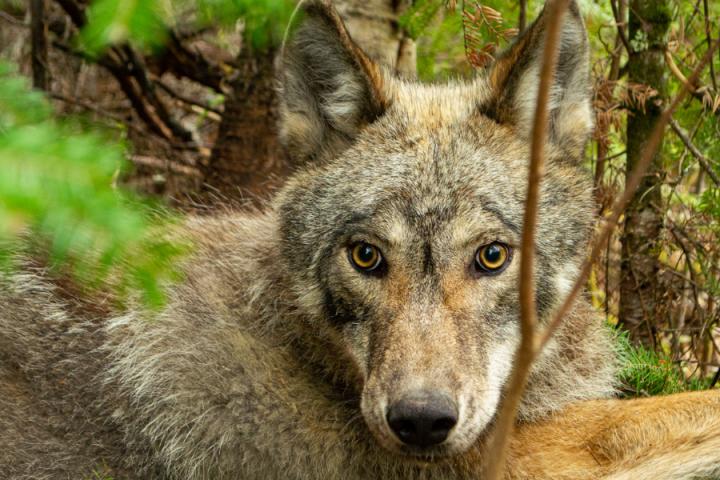In first systematic analysis of their ambushing behavior, U of M researchers find wolves’ hunting strategies are highly-flexible depending on their prey.

Credit: Voyageurs Wolf Project
Wolves are arguably the most well-studied large predators in the world, yet new research shows there is still a lot to learn about their hunting tactics. Typically, wolves hunt large mammals like moose, deer, and bison in packs by outrunning, outlasting, and exhausting their prey. However, throughout the dense boreal forests in North America and Eurasia, during the summer wolves often hunt beavers by themselves.
But how does a wolf catch a semi-aquatic prey that spends little time on land and never ventures far from the safety of its pond? Turns out with patience, and a lot of waiting.
In a new paper published in the journal Behavioral Ecology, researchers from the University of Minnesota and the Voyageurs Wolf Project–which studies wolves in the Greater Voyageurs Ecosystem in the northwoods of Minnesota–show that wolves have evolved ambush hunting tactics specifically tailored for catching and killing beavers.
“Over a five-year period, we estimate that our field research team collectively put in over 15,000 person-hours to search nearly 12,000 locations where wolves had spent time. Through this effort, we ended up documenting 748 locations where wolves waited to ambush beavers but were unsuccessful, and 214 instances where wolves killed beavers,” said Sean Johnson-Bice, a co-author of the study. “This dedicated fieldwork has provided unprecedented insight into the hunting tactics wolves use in boreal environments.”
Beavers have extremely poor eyesight, so they rely primarily on their well-developed sense of smell to detect predators on land–and wolves appear to have learned this through time. Researchers discovered wolves choose ambushing sites within a few feet of where beavers are active on land because wolves have learned beavers cannot visually detect them. When doing so, wolves almost always choose ambushing sites that are downwind to avoid being smelled by beavers.
“The results are very clear,” said Tom Gable, the study’s lead-author: “89-94% of the ambushing sites were downwind, where beavers were likely unable to smell wolves.”
When staking out beavers, wolves appear to be surprisingly patient. They spend substantial periods of time waiting next to areas where beavers are active on land, such as near beaver dams and trails.
“Wolves waited an average of four hours during each stakeout. But they often waited eight-12 hours or more, and one wolf even waited-in-ambush for 30 hours,” said study co-author Austin Homkes.
The researchers note that these behaviors were not unique to a few wolves. Instead, wolves from multiple packs across several years used the same ambushing tactics, indicating that this behavior is widespread throughout the Greater Voyageurs Ecosystem and likely other ecosystems where wolves hunt beavers. Notably, wolves and beavers co-occur across much of the Northern Hemisphere so the implications have wide applicability.
“Gathering data to demonstrate how wind direction influences the ambushing behavior of predators has been difficult for animal ecologists,” said co-author Joseph Bump. “Scientists have long-thought that ambush predators are able to strategically choose ambush sites in areas where prey are unable to detect them via scent. Until now though, documenting these hunting tactics in exhaustive detail proved extremely challenging.”
Ultimately, the study challenges the classic concept that wolves are solely cursorial predators (i.e., predators that kill their prey by outrunning and outlasting them). Instead, wolf-hunting strategies appear highly flexible, and they are able to switch between hunting modes (cursorial and ambush hunting) depending on their prey.
“It is the first systematic analysis of wolf ambushing behavior,” said Gable. “It overturns the traditional notion that wolves rely solely on hunting strategies that involve pursuing, testing, and running down prey.”
###
Media Contact
Patrick Stumpf
[email protected]
Original Source
https:/




